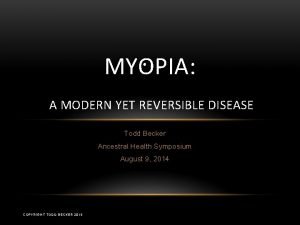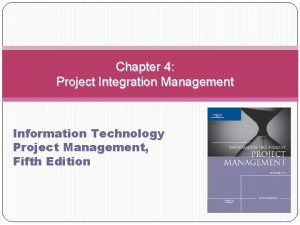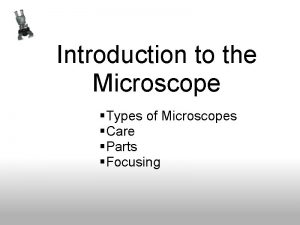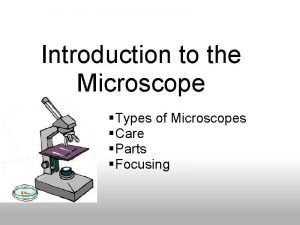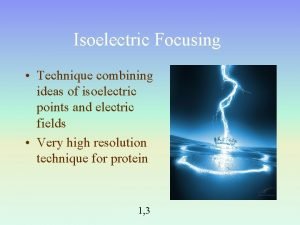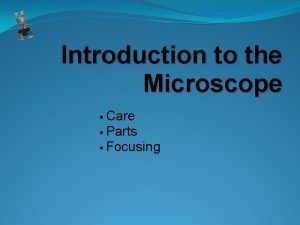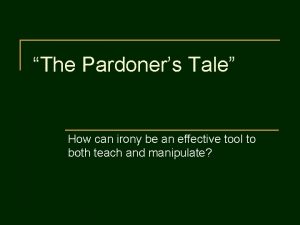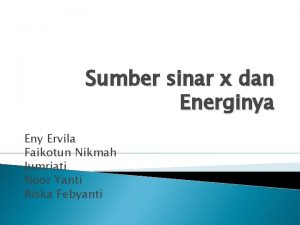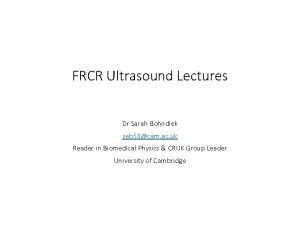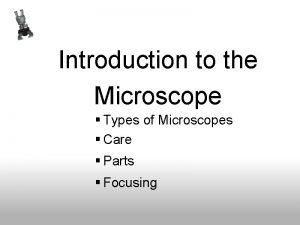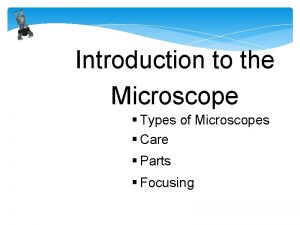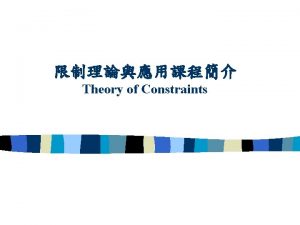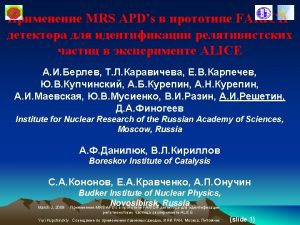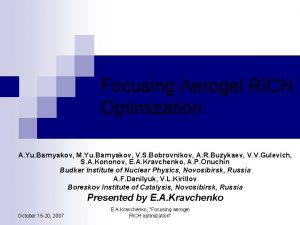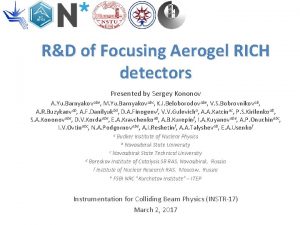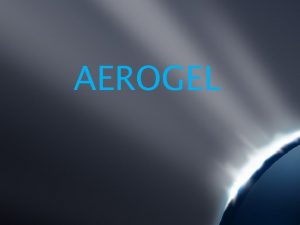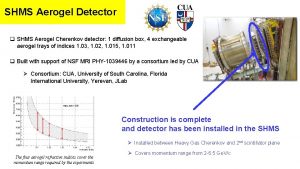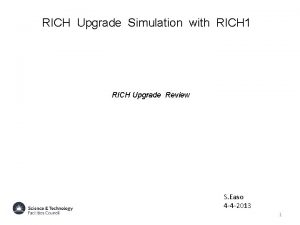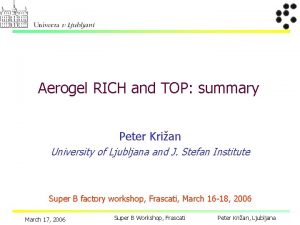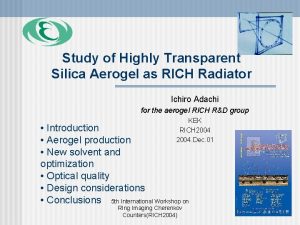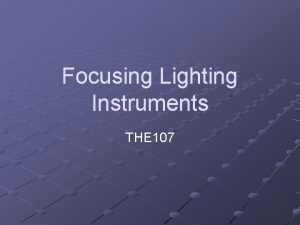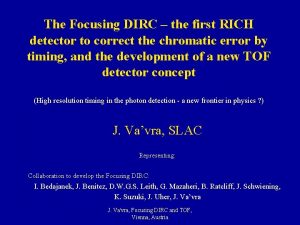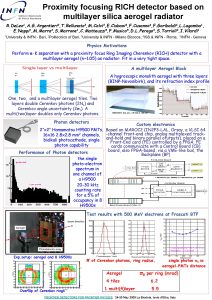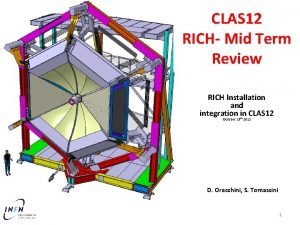Focusing Aerogel RICH with Si PM Photodetectors E























- Slides: 23

Focusing Aerogel RICH with Si. PM Photodetectors E. A. Kravchenko Budker INP, Novosibirsk, Russia

FARICH for the Super. B detector (MRS APD) n n CPTA MRS APD (Moscow) --- silicon photomultiplier n 2. 1 x 2. 1 mm sensor n 3 x 3 mm case size (50% active/total area) n PDE=40% @ 600 nm 3 -layer focusing aerogel, nmax=1. 07, total thickness 25 mm Number of channels – 160000 Amount of material, (X 0) = 3%(aerogel) + 1%(Si. PM) + 6% (electronics, cooling, support, cables) = 10% !

MRS APD parameters n n n n Producer - Center of Perspective Technology and Apparatus – CPTA, Moscow http: //www. spta -apd. ru/ Genuine name - MRS APD (other names: Si. PM, PPD, MPPC…) 2. 1 x 2. 1 mm sensor 4 x 4 mm case size (could be reduced to 3 x 3 mm) PDE=40% @ 600 nm Gain ~ 4· 105 Time resolution ~100 ps Dark counts ~10 MHz (0. 5 pe threshold, room temperature)

FARICH expected performance, Monte Carlo results • Npe = 18 • σβ/β = 8· 10 -4

FARICH momentum resolution σβ/β = 8· 10 -4 σP/P=γ 2∙σβ/β Potentially this could be the very strong argument for Forward PID

What about noise? Estimation S/N=Npe/(Npx·fn·τ), where : ¨ Npe – number of Cherenkov photons, ¨ Npx= ring area/(pixel size)2 – number of pixels in the ring of the width ± 3σr, ¨ fn – noise rate, ¨ τ – time window. fn = 10 MHz τ = 1 ns

Suggestion for the read-out electronics CERN has developed for ALICE TOF high performance chips (high rate, small dead time): ¨ 8 -channel NINO ASIC chip (very high rate >10 MHz, low power front-end amplifier discriminator ) ¨ 32 -channel HPTDC ASIC chip (programmable TDC with clock period between 25 ps to 800 ps, 5 ns dead time, up to 16 MHz)

Work on Fast MC simulation Results of Alexey Berdyugin visit to Padova. o Geometry description is done: Aerogel – 3 cm, 3% X 0 • 7 cm gap • 5 cm for photodetector block, ( NEMA G 10 – 4% X 0, cheramics Al 2 O 3 – 3% X 0) • o Hit information is prepared (particle type, coordinate and velocity) upper limit as in DIRC Tasks for the second visit (March): • • To add the identification To add the momentum measurement We are planning the second visit of Alexey to Padova in March. The Fast MC with Forward PID option will be ready for the

Si. PM radiation hardness o Need to be carefully investigated: What will be the neutron flax in Super. B? MC simulation of background conditions is needed. • Is it possible to use shielding? • o It is known that the main effect from the irradiation is the increase of dark noise rate: We need fast, small dead time electronics. • Cooling will help • Optical collection devices could increase signal to noise ratio. •

What we have for the test beam and prototype o 35 MRS APD for the first stage 64 channel TDC CAEN - V 1190 B Based on 2 HPTDC chips

Our plans o o Prototype – to make the first test with the beam at the end of 2009 Fast MC – Forward PID description will be ready for use in April

= 5. 5 Ge. V he converter in the beam halo to receive bremstrahlung gamm t gamma-quants to electron-positron pairs in the target. electrons (positrons) with the required energy we use the magn Test beam at VEPP-4 M, Novosibirsk

Test beam apparatus o o o Magnet Coordinate chambers Veto and trigger counters Na. I calorimeter FARICH prototype

What we have for the test beam and prototype o o Experimental hall reconstruction is n progress. Magnet+power supply (B = 1. 5 Tesla)

Our plans for the test beam • Magnet will be ready in April-May • Prototype will be ready at June-July • The first experiment – November-December 2009 • MRS-APD tests and characterization we are planning to do together with Padova group

Plans on forward PID fast simulation o Alexey Berdyugin will come to Padova next week (Visit is supported by Padova group). • Geometry and material description • PID performance according to MC simulation

Additional slides

FARICH for the Super. B detector (MCP PMT) n n n Burle MCP PMT with 3 x 3 mm pixels (16 x 16 matrix), photoelectron collection efficiency 70%, geometrical factor 85% 3 -layer focusing aerogel, nmax=1. 07, total thickness 30 mm Number of PMTs - 550 Number of channels – 140000 Amount of material, (X 0) = 3. 5%(aerogel)+14%(MCP PMT)+5÷ 10% (support, electronics, cables) > 23÷ 28% !

Forward TOF and FARICH comparison TOF FARICH Pro n. Much better π/K, μ/π, e/π identification n. Momentum measurement improvement in the forward n. Better background endurance Contra n 15 cm of additional space n 10 times more channels n. Price (? ) The amount of material is almost the same

Multilayer aerogel characterization 100 x 41 mm, Lsc = 45 mm at 400 nm

Xray measurement, density distribution The increase in density at the internal borders is the result of the production procedure (diffusion). Does it effect the performance? Layer <n> n, (optimal) n, (design) h, mm (design) 1 1. 046 1. 050 12. 6 12. 5 2 1. 041 1. 040 1. 044 13. 2 13. 3 3 1. 037 1. 035 1. 039 15. 2 14. 2

Monte Carlo simulation of longitudinal refractive index fluctuations n n 200 mm expansion gap 3 types of radiators n 3 layer as designed (ideal) n Xray data avereged to 3 layers n Xray data avereged to 14 layers

Simulation results, π/K separation n Npe =14 σβ = 5∙ 10 -4 n ‘optimal’ radiator → best resolution for 4 Ge. V/c pions n ‘real’ experimental radiator → best resolution for 3. 5 Ge. V/c kaons π/K separation up to 8 Ge. V/c (>3σ)
 Seagel aerogel
Seagel aerogel Zenniopticals
Zenniopticals Focusing on broad organizational needs
Focusing on broad organizational needs Different types of microscope and their uses
Different types of microscope and their uses Example of project integration management
Example of project integration management When focusing a specimen you should always start with the
When focusing a specimen you should always start with the Awareness requires totally focusing attention on the task
Awareness requires totally focusing attention on the task Lwws
Lwws Isoelectric focusing
Isoelectric focusing The primary output device in a graphics system is
The primary output device in a graphics system is When focusing a specimen, you should always start with the
When focusing a specimen, you should always start with the Situational irony in the pardoners tale
Situational irony in the pardoners tale Proses terjadinya bremsstrahlung
Proses terjadinya bremsstrahlung Sarah bohndiek
Sarah bohndiek Types of microscope
Types of microscope Types of microscopes
Types of microscopes The five focusing steps
The five focusing steps Ligevægtssystem
Ligevægtssystem Tudor rich and poor
Tudor rich and poor Rich and poor peter singer
Rich and poor peter singer Siberian pure herbs massage balsam anwendung
Siberian pure herbs massage balsam anwendung The parable of the dishonest farmer
The parable of the dishonest farmer Ancient roman dinner party invitation
Ancient roman dinner party invitation The shoemaker and his wife mary lived
The shoemaker and his wife mary lived

